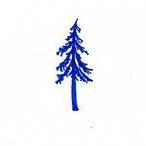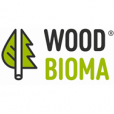
The previous article (Standard Tree Inspection) concluded with root collar examination (RCX). This time we will refer to the list of tree features and conditions in the flare and trunk, as noted in 83.3 of the ANSI A300 Tree Care Standard, to clarify what they entail. Examples from the field will illustrate the seamless transition from diagnosis to care of the trunk and flare. Principles borrowed from a British system will be italicised. Not to spoil your day, but here’s a spoiler alert: cleaning is a part of both processes.
“Specifying the method, area, depth, tools, and limitations of inspections” is first. You can call it the trunk flare, or the root flare, but Part 8 avoids adjective confusion by defining the flare as “where the trunk broadens to form roots” (the “root collar” is where the buttress roots divide, “between the flare and the roots”). Here we will use manual methods and tools available to anyone, from a shovel to a chisel. We’ll go as deep as practical, and we’re always limited by time, money, a lack of research, and other factors. “Avoiding damage to living tissue, bark or soil” means we should not break the tree’s Compartmentalisation of Damage in Trees (CODIT) barriers, unless
As an example, after a 3m-diameter tree was tomographed, an experienced arborist used a microdrill in only three locations – just enough to confirm the 24-point tomogram. In contrast, beginning assessors might drill a 3mm hole through every buttress root of every big tree they see, just to get numbers that have no bearing on the stability of trees. This of course would cause a great deal of wounding to that vital area, like a steel stake driven into the heart of the tree. Oozing, infected holes cry out for relief from excessive drilling.
Wounds And The Tree’s Response To Wounds
How can we give relief to an infected or damaged area? The 6X Protocol was designed with this question in mind.

• EXpose the affected area: clear away obstructions like grass and other weeds, mulch, or soil
• EXcavate loose decayed tissue: clean away any dead or foreign matter. If tissue is living but infected, give the tree the benefit of the doubt. Drying alone can be enough to speed CODIT
• EXcise respecting the barriers: cut into living tissue only if you are certain it is justified. If the pathogen is aggressive and the tree defenceless, or if collecting samples for laboratory analysis, then living tissue is cut away
• EXamine strength and weakness, like columns and active infections
• EXtract information by recording images and measurements to reach a definite diagnosis and mitigation options. According to the ZTV, “Before contracts begin, a definite diagnosis”
• EXhaustive specifications are written and illustrated to implement mitigation options and carry out the work. These include trunk drenching with minerals like phosphorous acid, growth regulators such as Paclobutrazol, and prochloraz, which is approved for management of Armillaria in the UK
Prochloraz is “a mixture comprising a combination of a phenyl amide fungicide; an imidazole fungicide; and a phthalimide containing fungicide, wherein the composition has a synergistically enhanced activity” (patent application). Other compounds such as salicylic acid also work, which is why willow bark is spread under apple trees with scab.
Conditions in the crown that may reflect root conditions guides the eye from branches downward, through the trunk and flare.


Stem tissue connecting the crown and the roots are referred to as “functional vertical segments”, “columns” and “discrete xylem channels” by veteran tree experts. In older senescing trees as other “sections of the tree collapse and decay, these may take the form of young stems”. This could be considered a form of self-propagation, where the tree divides, as a lily or an iris might.
“Aerial roots… arising from the area of historic wound wood… act as extra support, as well as exploiting the decayed wood in the centre of the stem to supply nutrients to the crown. Stem hollowing that gradually recycles the non-functional woody tissue while retaining a structurally robust cylindrical bole” are favourable features to note during a tree inspection.
Observations of veteran trees that appear to have successfully survived without recent intervention may give some idea of the tree’s ‘strategies’… different species seem to demonstrate different survival strategies with varying degrees of success where the following conditions apply:
• A relatively undisrupted rhizosphere
• Little competition for light allowing the crown to retrenchment naturally reducing the sail area and leverage on weakening attachments
• A tendency to respond with epicormic growth around areas of the base, stem and crown


Tree association with pathogenic and beneficial microorganisms (e.g. mycorrhizae); the Ancient Tree Forum has developed a system for checking the soil away from the trunk for “good guy” fungi, and conserving that associate.
Girdling… by foreign objects, and the tree’s response; when bark is compacted, the tree cannot rebuild those columns until the compacted bark is traced. Chisels work to chip off the dead bark and retain the living phloem, which will promptly expand after it is released from the girdling bark.
Due to limited space, we will have to save “Tree association with beneficial and harmful insects” and “Graft unions in grafted trees” for another time.
In conclusion, consider the experience of Jeremy Barrell, when it comes to relying on our inspections and care, “… lawyers and the courts are attracted to stepwise analyses that are easy to understand, and there may be some merit in carefully considering this type of approach. …if it is accepted that compartmentalising the tree risk assessment process will assist the courts in applying the law, then arborists who have considered what the courts are looking for and are able to explain what they did in those terms will obviously be well-placed to refute allegations of negligence.” It’s a “sleep-tight protocol.”
If a systematic and thorough inspection and standard care are performed, arborists can feel very good about improving trees that seem to be in a bad way.

References
Barrel, Jeremy: www.barrelltreecare. co.uk/pdfs/BTC86-AANewsComplete-191013.pdf
Fay, Neville: www.treeworks.co.uk/ downloads/Notes_on_Arboricultural_ Techniques_for_VT_management.pdf
Percival, Glynn: Systemic Induced Resistance (SIR) presentation at ISA 2015 conference.
Report Article


.thumb.jpg.4a8e2360f3200bf7b0c542de10609966.jpg)










Recommended Comments
There are no comments to display.
Create an account or sign in to comment
You need to be a member in order to leave a comment
Create an account
Sign up for a new account in our community. It's easy!
Register a new accountSign in
Already have an account? Sign in here.
Sign In Now